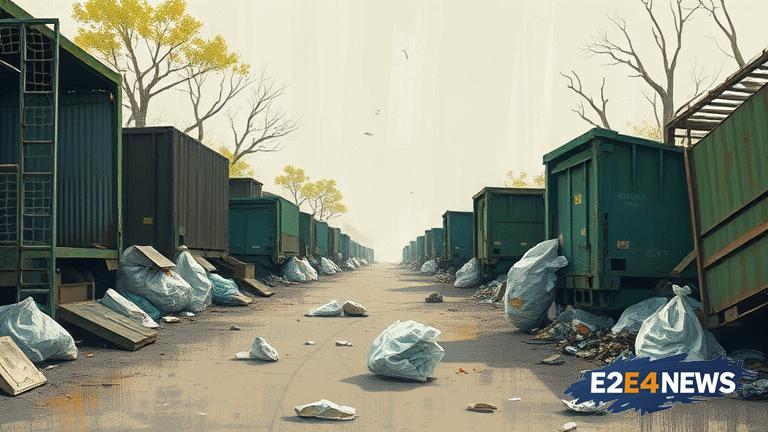The disposal of garbage is a crucial aspect of modern life, with the average American generating about 4.4 pounds of trash per day. But have you ever stopped to think about where all that waste ends up? The answer is complex and multifaceted, involving a network of landfills, recycling facilities, and other disposal methods. In the United States, the majority of municipal solid waste is sent to landfills, where it is buried and left to decompose. However, this method has significant environmental drawbacks, including the production of methane, a potent greenhouse gas, and the potential for toxic chemicals to leach into groundwater. In recent years, there has been a growing trend towards recycling and composting, which can significantly reduce the amount of waste sent to landfills. Recycling facilities use various techniques to sort and process materials such as paper, plastic, glass, and metal, which are then sold to manufacturers to be used in the production of new products. Composting, on the other hand, involves the breakdown of organic materials such as food waste and yard trimmings into a nutrient-rich soil amendment. Despite these efforts, the United States still lags behind many other developed countries in terms of waste management, with a significant portion of recyclable materials ending up in landfills. One of the main challenges is the lack of standardized recycling programs, which can make it difficult for consumers to know what materials are accepted and how to properly prepare them. Additionally, the rise of single-stream recycling, which allows residents to mix all their recyclables together in one bin, has led to increased contamination rates and decreased the quality of recyclable materials. To address these issues, many cities and towns are implementing new waste management strategies, such as pay-as-you-throw programs and zero-waste initiatives. These programs aim to reduce the amount of waste generated and increase the amount of materials that are recycled or composted. Some cities are also investing in advanced recycling technologies, such as mechanical biological treatment facilities, which can process a wide range of materials and produce high-quality recyclables. Furthermore, there is a growing movement towards reducing waste at the source, through strategies such as reducing packaging, increasing product durability, and promoting sharing and collaboration. Consumers can also play a role by making conscious choices about the products they buy and how they dispose of them. For example, choosing products with minimal packaging, buying in bulk, and avoiding single-use plastics can all help to reduce waste. Additionally, participating in community composting programs or starting a backyard compost pile can help to divert organic materials from landfills. As the world’s population continues to grow and urbanize, the need for effective waste management strategies will only continue to increase. By understanding the complex journey of waste and taking steps to reduce, reuse, and recycle, we can all play a role in creating a more sustainable future. The fate of our garbage is a critical issue that requires a comprehensive and multifaceted approach, involving governments, businesses, and individuals. By working together, we can reduce the environmental impacts of waste disposal and create a healthier, more sustainable world for generations to come. The journey of waste is a long and complex one, but by taking small steps towards reducing, reusing, and recycling, we can make a significant difference. It is a journey that requires patience, persistence, and a commitment to creating a better future. As we move forward, it is essential that we prioritize waste reduction, increase recycling rates, and promote sustainable practices. Only through a collective effort can we hope to mitigate the environmental impacts of waste disposal and create a more sustainable world. The time to act is now, and the journey of waste is an issue that requires immediate attention and action. By taking responsibility for our waste and working towards a more sustainable future, we can create a better world for ourselves and for future generations.
